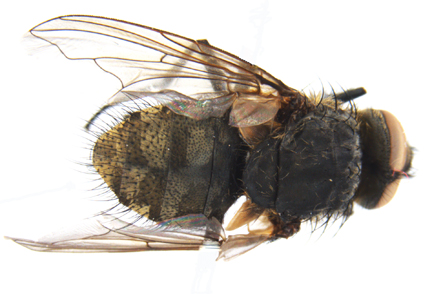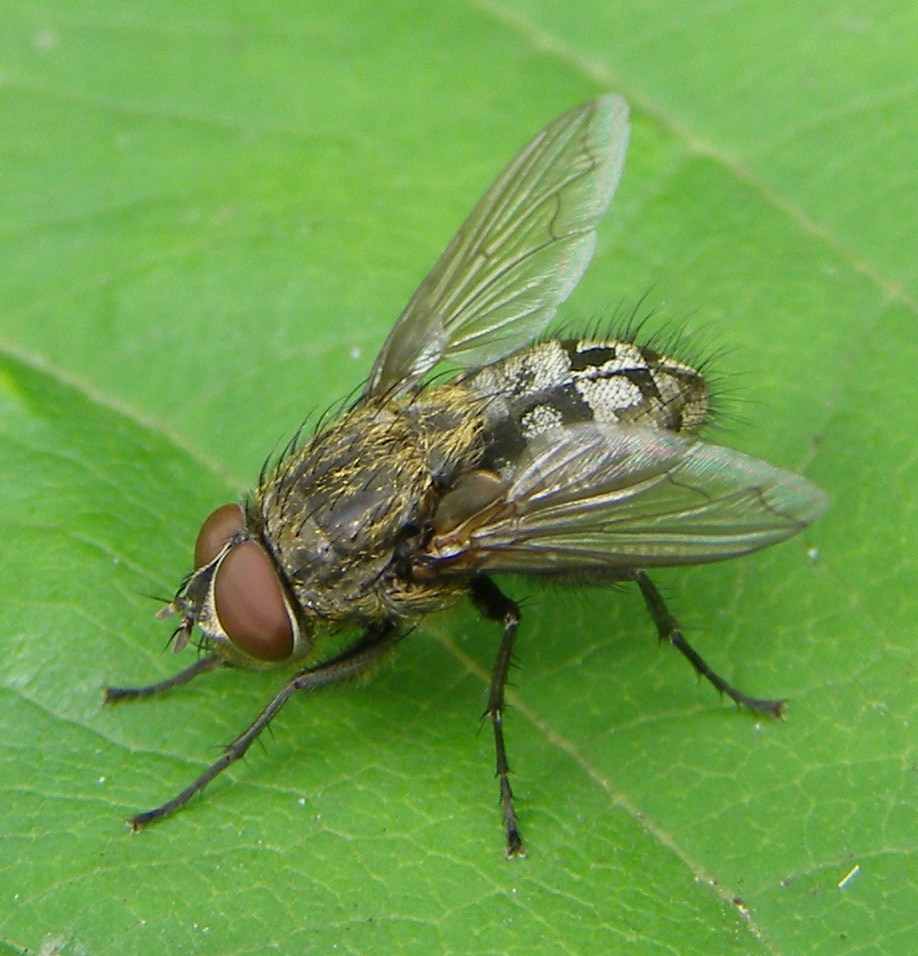Cluster Flies
Pollenia spp.
Identification
- dull grayish brown
- yellow hairs on the thorax
- slow moving; frequent at indoor windows in the winter
Nesting Habits
- adult flies lay eggs in soil and the maggots move to and develop on earthworms in fields and turf
- as many as four generations per growing season
- seek overwintering sites in buildings
- typically overwinter in upper levels of buildings (e.g., attics, wall voids, false ceilings)
Diet
- larvae (maggots) develop as parasites of earthworms
- not associated with garbage or animal wastes
- adults feed on flower nectar
Significance
- adults seek sheltered areas to overwinter such as crevices and cavities in buildings in late summer and early fall
- may become active during warm periods of winter
IPM Recommendations
- Monitor for cluster flies in the fall on the outside of buildings on sunny walls.
- Monitor for cluster flies in the winter on window sills.
- Caulk and seal exterior openings, cracks and crevices on building exterior.
- Keep screens in good repair.
- Vacuum flies.
- Use a fly swatter.




